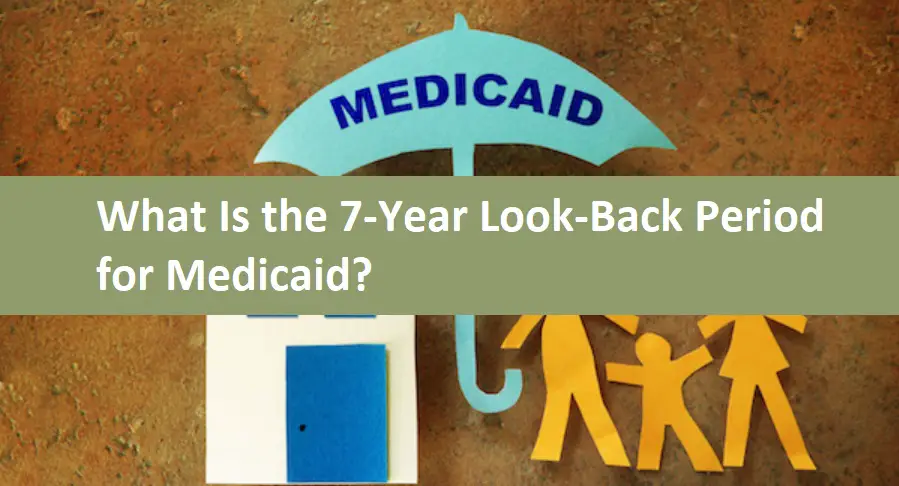As we age, many of us face the possibility of needing long-term care. Medicaid is a federal program that can help seniors cover the costs of this care, but the program has strict financial eligibility requirements. One of these requirements is the 7-year look-back period.
In this guide, we’ll explore what the 7-year look-back period is, how it has changed over time, and strategies you can use to avoid penalties while still protecting your assets. So, keep reading to learn more!
What Is the 7-Year Look-Back Period for Medicaid?
The Medicaid look-back period is a period of time during which Medicaid checks your financial history to see if you gave away or transferred assets in order to qualify for Medicaid. Medicaid does this to ensure that people don’t use the program to transfer assets to their children or other family members, then immediately qualify for Medicaid.
The seven-year look-back period for Medicaid means that if you transfer any assets for less than the fair market value during the past seven years before your Medicaid application, Medicaid will impose a penalty period before you become eligible for Medicaid. This means that you will have to pay for your long-term care expenses out of pocket until the penalty period is over.
What Happens During the Medicaid Look-Back Period?
During the Medicaid look-back period, Medicaid will examine all of your financial records, including bank statements, tax returns, and other financial documents. Medicaid will look for any transfers of assets for less than fair market value, such as selling your house to your children for less than its fair market value or giving away money to family members as gifts.
For example, let’s say you gave $10,000 to your daughter two years ago. If you apply for Medicaid today, Medicaid will look back seven years and see that you gave away $10,000 during that time. Medicaid may impose a penalty period during which you won’t be eligible for benefits.
The penalty period is calculated by dividing the value of the transferred assets by the average monthly cost of long-term care in your state. For example, if the value of the transferred assets is $100,000 and the average monthly cost of long-term care in your state is $5,000, the penalty period would be 20 months.
It’s important to note that the penalty period starts from the date you apply for Medicaid, not the date you made the asset transfer. So, if you made an asset transfer five years ago and applied for Medicaid today, the penalty period will still be calculated based on the value of the transferred assets and the average monthly cost of long-term care at the time of your Medicaid application.
Wasn’t There a 3-Year Medicaid Look Back Period?
Yes, there used to be a three-year look-back period for Medicaid, but it was changed to five years with the Deficit Reduction Act of 2005. The look-back period was later increased to seven years in 2020 as part of the Consolidated Appropriations Act.
It’s important to keep in mind that Medicaid rules and regulations may change over time, so it’s always a good idea to check with your Medicaid office or an attorney specializing in elder law to stay informed about any updates or changes to the Medicaid look-back period.
Can You Avoid Penalties for the Medicaid Look-Back Period?
While it’s true that Medicaid imposes penalties for gifts or transfers made during the look-back period, there are some exceptions that can help you avoid these penalties.
One exception is for gifts made to a spouse. If you are married and give money or assets to your spouse, there is no penalty. In addition, gifts made to a disabled child or a child under the age of 21 are exempt from penalties.
Another exception is for gifts made for reasons other than to qualify for Medicaid. For example, if you gave money to a charity or made a gift for a special occasion like a graduation or wedding, there would be no penalty.
There are also certain strategies that can help you avoid penalties while still protecting your assets. For example, you may be able to transfer your assets into a trust or purchase a Medicaid-compliant annuity, which can help you become eligible for benefits without incurring penalties.
Another option is to use Medicaid-compliant annuities, which can convert assets into income streams that Medicaid doesn’t count as resources. This can help you reduce your countable assets and avoid Medicaid penalties.
It’s important to understand that these strategies can be complex, and it’s best to work with a financial planner or elder law attorney who can guide you through the process and ensure that you’re making informed decisions that won’t jeopardize your eligibility for benefits.

Morgan Elfman is a compassionate writer, dedicated caregiver, and passionate advocate for senior well-being. Born and raised with a deep sense of empathy and a natural inclination towards service, Morgan has devoted her life to making a positive impact on the lives of seniors.
As a writer for www.choiceseniorlife.com, Morgan utilizes his skills to create insightful and informative content that addresses the unique needs and challenges faced by seniors and their families. Her articles not only provide valuable information on health, lifestyle, and care options but also strive to inspire and empower seniors to lead fulfilling lives.
